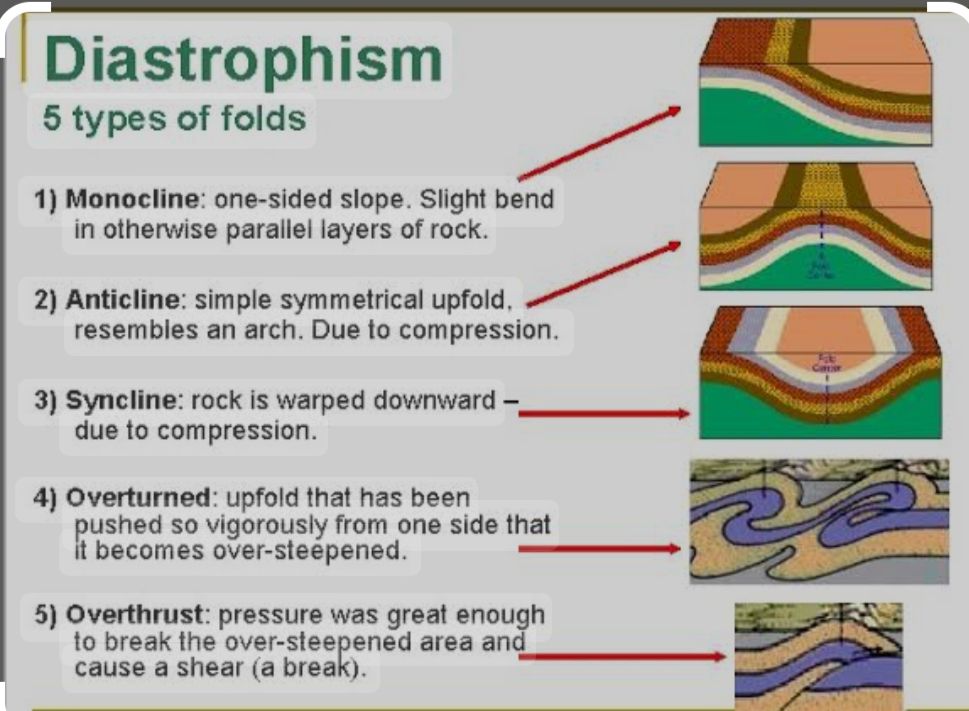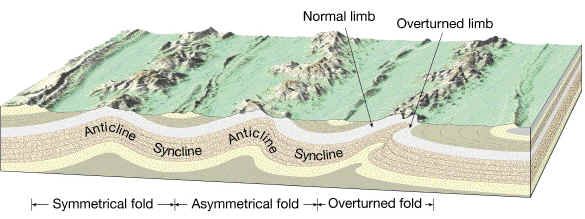Introduction
Geomorphology is the study of the earth’s surface features and how they are shaped by various forces. These forces can be divided into two main categories: endogenic (internal) and exogenic (external). Together, these forces create the physical and chemical changes that shape the earth’s landscape, and are referred to as geomorphic processes.
*Endogenic geomorphic processes, such as diastrophism and volcanism, occur within the earth’s interior. Diastrophism encompasses the deformation of the earth’s crust caused by tectonic forces, while volcanism includes the formation of volcanic landforms due to the eruption of molten materials.
*On the other hand, exogenic geomorphic processes take place on the earth’s surface and include weathering, mass wasting, erosion, and deposition. Weathering is the breakdown of rocks and minerals by chemical and physical processes. Mass wasting refers to the movement of soil, rock, and other materials downslope under the influence of gravity. Erosion is the removal of earth materials by agents such as wind, water, ice, and gravity, while deposition is the accumulation of these materials in new locations.
*Geomorphic agents are the mobile mediums, like running water, moving ice masses, wind, waves, and currents, that facilitate the removal, transportation, and deposition of earth materials. These agents play a significant role in shaping the earth’s surface through the various geomorphic processes.
Endogenic Forces
1.The forces or movements within the Earth’s crust are generated through the interaction of matter and temperature. These Earth movements can be broadly classified into two categories: diastrophism and sudden movements. The primary driving force behind these endogenic geomorphic processes is the energy that originates from within the Earth.
Diastrophism is the general term applied to slow bending, folding, warping, and fracturing.
Warp==make or become bent or twisted out of shape, make abnormal; distort.
2.This internal energy is primarily produced by radioactivity, rotational and tidal friction, as well as the primordial heat that has been present since the Earth’s formation. Due to geothermal gradients and heat flow, this energy causes diastrophism (slow and gradual deformation of the Earth’s crust) and volcanism (volcanic activity) within the lithosphere.
Diastrophism
All processes that move, elevate or build up portions of the earth’s crust come under diastrophism.
They include:
orogenic processes involving mountain building through severe folding and affecting long and narrow belts of the earth’s crust; In the process of orogeny, the crust is severely deformed into folds.
epeirogenic processes involving uplift or warping of large parts of the earth’s crust;
Due to epeirogeny, there may be simple deformation. Orogeny is a mountain-building process whereas epeirogeny is a continental building process.
Through the processes of orogeny, epeirogeny, earthquakes, and plate tectonics, there can be faulting and fracturing of the crust. All these processes cause pressure, volume, and temperature (PVT) changes which in turn induce metamorphism of rocks.

